How CTRMs are revolutionizing commodities trading
Note: This content was originally published by TabbFORUM.
Commodity Trading and Risk Management (CTRM) solutions aren’t new but their importance is only growing. That’s because of new complex contracts that require modeling, particularly in the energy sector. This article highlights the CTRM’s past and present role, its benefits, as well as the new demands that are being placed on these systems, writes Richard Murphy, ION Commodities Market Owner – Liquid & Bulk Commodities.
Today’s commodity markets are navigating unprecedented complexity as a result of the global energy transition and increasingly common supply chain disruptions.
Indeed, the Keystone Pipeline spillage of 2022 clearly exposed the fragile and intricate nature of our changing markets, revealing how one disruption to the flows of a singular pipeline could seriously impede the entire crude oil ecosystem and create major, lasting upheaval.[1]
In such a volatile and fast-changing landscape, it is critical that robust, effective technology is pervasive across commodities markets. There is no doubt that the resilience and agility of any trading business will continue to be underpinned by the Commodity Trading and Risk Management (CTRM) solution at its very core.
The evolution of CTRMs
Though CTRMs are critical assets for commodities businesses, their deployment is not new. The deregulation of natural gas and power in the 1990s and the onset of mark-to-market accounting introduced new intricacies to commodities markets. Meanwhile, regulation in subsequent years – coupled with the 2007/8 financial crisis – established another whole tranche of complexity. To manage this, companies leaned on CTRM solutions to bring structure and automation to their trading and operational strategies. Indeed, analysts such as Commodity Technology Advisory (ComTech) have projected that the CTRM market could grow to around $2.04 billion by the end of this year.[2]
Today’s best solutions offer a breadth of benefits. Foremost, CTRMs gather information and aggregate data into a single solution to provide one version of the truth. Beyond unifying information, CTRMs automate processes to support trading, pricing, logistics, and settlement, empowering businesses to grow, improve their cash cycles, and meet reporting deadlines – a step change from the days of manual data capture and reconciliation. In addition, CTRMs improve process flows by validating activities that fall within contractual obligations, automating the flow of information for approval and additional validation, and passing information onto other processes, like scheduling and Profit and Loss (P&L) reporting.
Other significant capabilities include the ability of CTRMs to reveal insights through the collection and analysis of a multitude of trade and logistics data. CTRMs aggregate positions by key components, including location, product, portfolio, region, company, and counterparty, and provide visibility into deal and portfolio level profitability, including logistics, storage, and hedging costs, and expected imbalances compared to contractual commitments.
By providing a high level of transparency across operations, CTRM technology is highly effective at controlling risk. These systems analyze and report on exposure, price volatility and sensitivity, and value at risk (VaR) – all crucial variables to monitor as the market continues to change at pace.
The role of technology in the energy transition
Importantly, the advantages of CTRMs have become infinitely more critical in the context of the global energy transition. Power Purchase Agreements (PPAs), defined as long-term contracts used for the purchase of renewable energy such as wind and solar, offer a sound example of the complexity that modern commodity traders must navigate. It would be nearly impossible to model PPAs’ terms, pricing structures, and projected power flows – some spanning up to 20 years – without a robust CTRM solution. In a similar way, LNG deals can extend over several years, potentially rivaling PPAs in terms of complexity. To evaluate contractual options and determine the most profitable way to utilize your assets, the rigorous data collection and insight generation capabilities of a CTRM solution are undeniably essential.
Biodiesel and Sustainable Aviation Fuel (SAF) also add complexity to the refined products and fuels sector due to the proliferation of these products and the intricacies of the associated storage and logistics assets for blending, storing, and transporting them. As investments in these market segments and others grow as part of the wider transition to renewables, the pre-trade analysis, risk management, and asset optimization capabilities of CTRM solutions will only become more important for market players to capitalize on new opportunities and remain agile.
Managing market disruptions
The Keystone Pipeline incident served as a stark reminder of the significant consequences of market disruptions. These incidents are hardly rare yet carry huge impacts for the entire market system. Without a CTRM solution, one can lose supply, market access, and, in some cases, their entire business. But with the right technology, businesses can lessen the negative impacts of disruptions and even gain market share.
Consider severe weather events – such as hurricanes – which commonly take key supply chain assets offline for the days or weeks surrounding the event. Businesses require CTRMs to determine the customers and facilities impacted: information which can then be used to redirect supplies where possible and execute trading and hedging strategies to cover supply and demand imbalances. The market must also be prepared for potentially more unexpected scenarios. When such events occur, replacement products, new contracts, trades, and scheduling all need to be executed quickly. A CTRM enables these activities to be accomplished rapidly while maintaining key validations and controls.
Military conflicts can result in reduced capacity or complete cuts of key supply lines due to physical barriers or diplomatic measures, such as sanctions. For highly utilized supply chains, losing access to a major transportation asset, like a pipeline, can quickly result in regional product shortages. CTRMs allow businesses to find and reroute alternative supplies within the impacted region. Outside the region, CTRMs can determine where excess product is available to be transported and sold to the area of impact.
These events can also result in prolonged shutdowns of key manufacturing or processing facilities, further extending product shortages. With a CTRM, businesses can quickly identify the product quantities required to maintain operations, hedge to limit inevitable price increases, and contract, trade, and schedule to secure the replacement product. In all cases, taking longer to initiate mitigating measures leads to greater costs and an increased likelihood of extended outages or even complete shutdowns. Quick mitigation facilitated by innovative technology enables businesses to maintain operations, meet contractual obligations, and gain market share as a supplier with available product.
A crucial investment
As the energy transition and increasing market disruptions make clear, navigating and thriving in the modern commodities market demands advanced technology. Managing the energy transition means evaluating long-term energy alternatives, reevaluating as legislation changes, and evolving as new products reach the market. Disruptions require quick evaluations of alternatives to determine the best option and quick execution to ensure business resilience. CTRMs increase the speed and accuracy of these activities by providing the data and analytics needed to rapidly make informed decisions.
Whether the impact of the energy transition or disruptions is positive or negative, quantifying it is critical for clear stakeholder communications and future mitigation, like proactively securing more capital before a general panic sets in. In positive cases, communicating information, like product availability, can establish business credibility and build market share. CTRM solutions excel at quickly reporting trade and operational data at aggregated and detailed levels, so the information is always ready. As commodities markets continue on their next evolution, the most crucial assets for businesses will not be the products they trade, but the innovative CTRM solutions capable of supporting these dynamic markets.
[1] Upstream, UPDATED: Keystone pipeline system remains offline due to 14,000-barrel oil spill into creek
(https://www.upstreamonline.com/safety/updated-keystone-pipeline-system-remains-offline-due-to-14-000-barrel-oil-spill-intocreek/2-1-1370441), 08 December 2022
[2] ComTech, 2019 CTRM Market Outlook Report (https://www.comtechadvisory.com/news/comtech-in-the-news/2019-ctrmtechnology-markets-forecast-at-1-7b-will-grow-3-2-per-annum-through-2023-according-to-market-analyst-firm-commoditytechnology-advisory/), 4 December 2019


